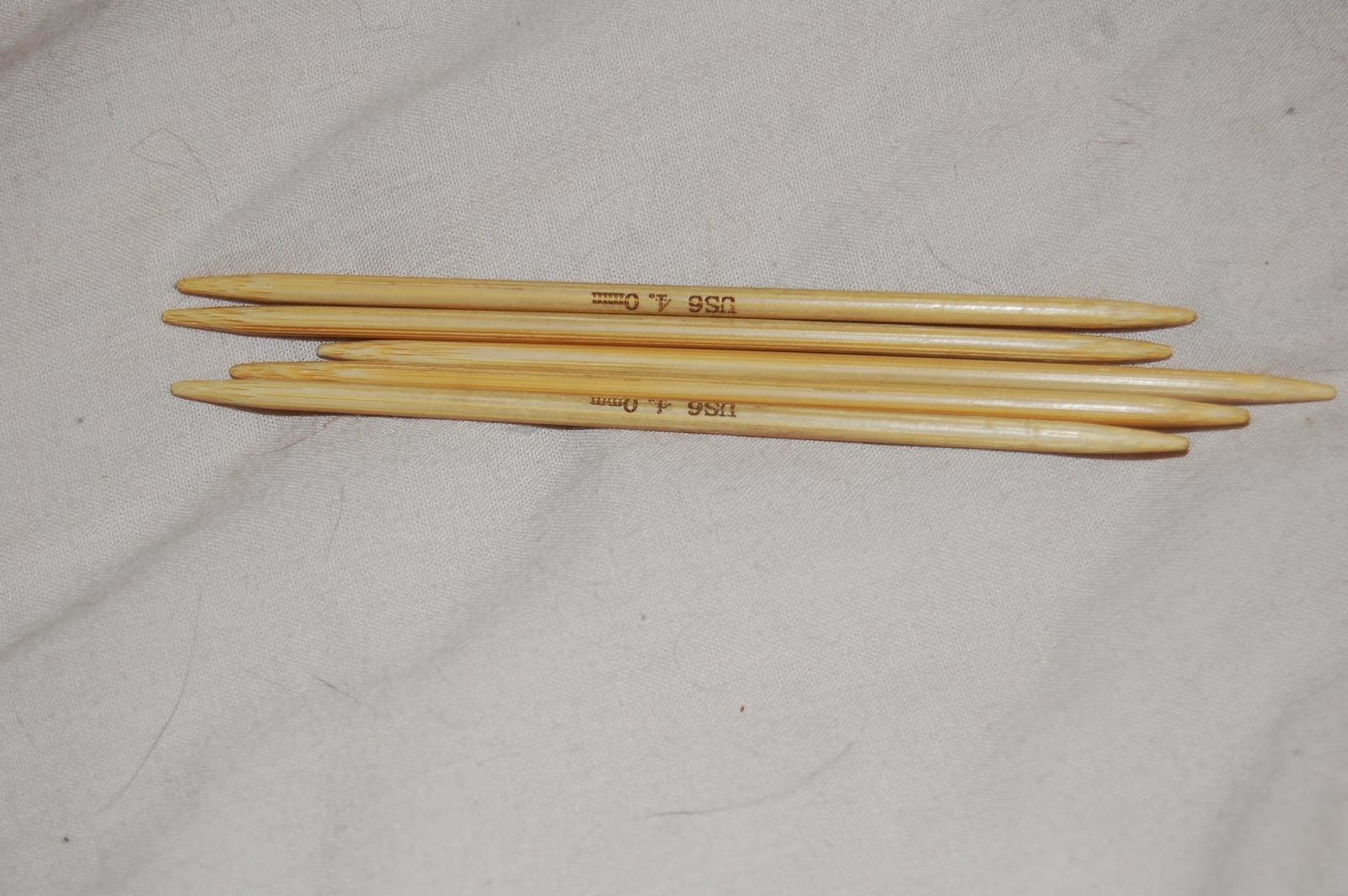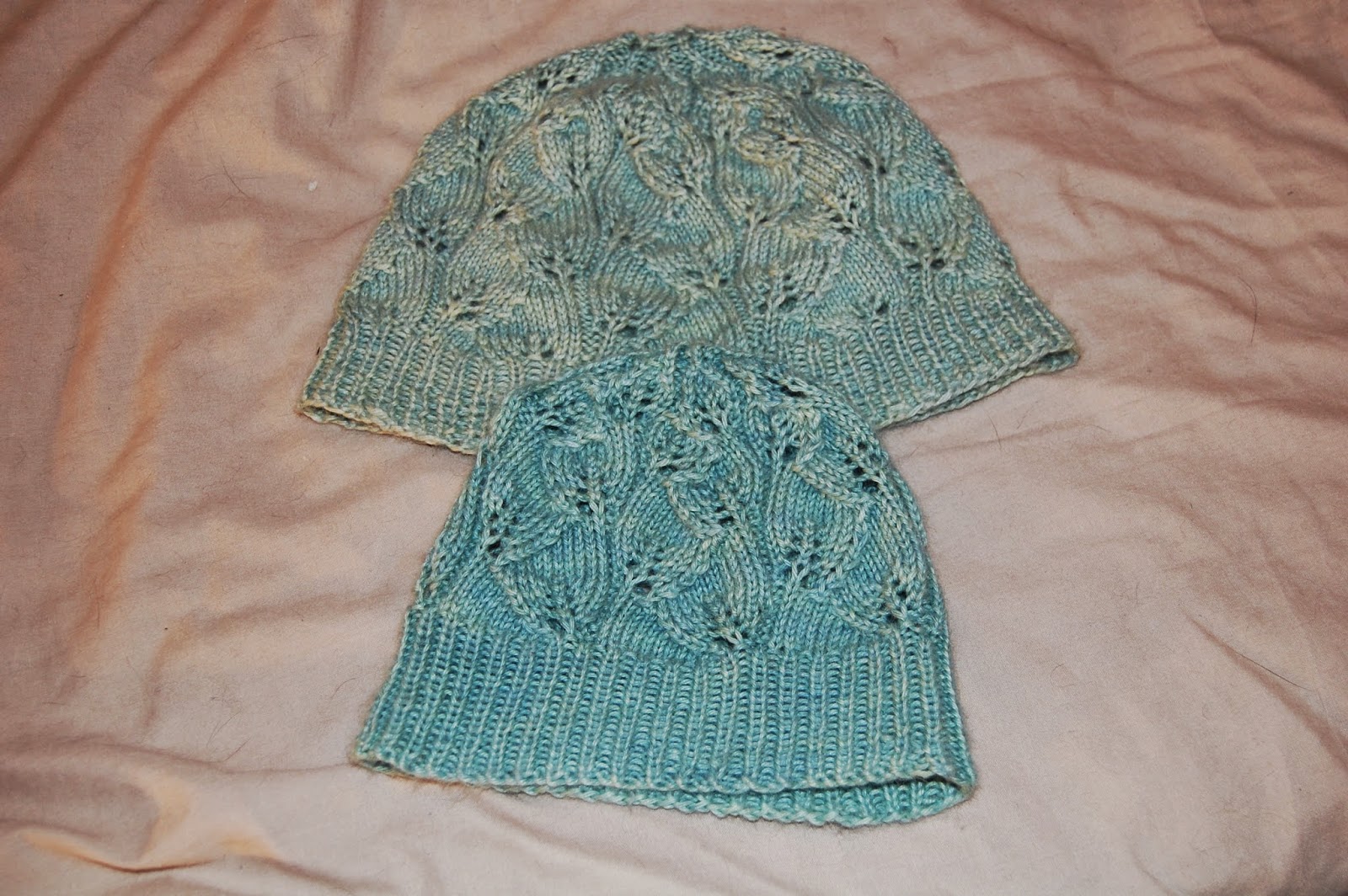Last week, I promised I would write more about an exciting plan I have for 2014. I have been thinking for awhile about doing some of my own design work, but putting thought into what I am physically capable of, and how much work design actually takes, I have decided on something a little different. I'm planning to do just a few designs, and sell the results; my first foray into the field is a lace shawl. I have also decided I'm going to do armwarmers, and I got a book on designing sweaters for Christmas, so I'll probably have a go at that at some point as well.

I've already started work on a shawl design, and have notes for another and possibly a third. Lace shawls are something I am confident making, and so far my design work has gone well, if slowly. It's fatiguing work. I've only taken one picture so far, a little sneak preview of what the first few rows look like, which will have to do until I've knit the first shawl and am happy with how it looks. I'm sixty or so rows in now, out of perhaps 200; I plan to knit until I run out of yarn. The first shawl I will keep, and any adjustments I make I will integrate into a second shawl, which I will give to a member of my family. The third will be up for sale. My sister already sells some of her own sewing creations at local craft shows in Columbus, Ohio, and I hope to partner with her.

In addition to my plans, I have been doing a lot of more ordinary work, working on things both for myself and for others. Several knitting podcasts I listen to are participating in a Halos of Hope charity drive called the
Podcaster Throwdown, (link to Halos of Hope store) where the various podcasters are competing to see who can donate the most hats. Listeners are encouraged to choose one podcast as their team and donate as many as they wish. I set myself a goal of five hats, some of which I made last year. The last one I finished this past week. It's a simple mock cable pattern called the
Caramel Ripple Hat (link goes to my Ravelry project page), which I made out of Debbie Bliss Cashmerino Aran. It's quite small, but will fit a child nicely. I plan to get my hats sent off in the next week.

At the request of my housemate, I made a little holder for her dictaphone. I crocheted it out of green and purple yarn, alternating rows, and am very happy with how it turned out. The green rows are a simple double crochet (American terms) and the purple rows are a crossed double, where I crochet in the second space, then go back and crochet in the first. The top has a picot edge.
I have also started a sweater for her. The pattern she picked is
Lundy, made out of some wool she picked up at Aldi - the brand is Kirkton House and it's an aran weight. The sweater is a mix of 1x1 ribbing and cables, an interesting mix of mindless knitting and intricate cablework.

That's not to say I'm not doing anything for myself. After doing five hats for Halos of Hope, I felt like making another for myself. I had recently given one away because it was really too large for me, and I thought I had just enough of the yarn from the first left to make a second if I made it smaller. I got out the pattern and knit the smallest size, and have just finished it tonight. It's a pattern called
Everglade and I've made it out of The Natural Dye Studio's Angel DK, which I got some time ago in a club special. This is unblocked, as I've literally just woven in the ends.

The other project I worked on for myself was a new pair of armwarmers. I seem to have developed a bad habit of taking finished objects I'm bored with and giving them to other people. My housemate is the major recipient of most of my recent generosity - since I've moved in she's gotten a hat that blocked large, and a set of armwarmers that have stretched, besides the dictaphone holder and the sweater that's on the needles. Anyway, I had some homespun yarn that I fancied using, and was planning to make a hat with it. Looking at the yardage, I decided to make the armwarmers with it instead, and was kind of glad I did. My spinning is getting better, but it's still not top notch, and this yarn is a little older than my newest and therefore not as good. It was uneven and would have made a rather rough hat, but it knitted up lovely and thick for armwarmers. The only downside I had was the fact that there wasn't enough. I had the foresight to weigh the ball at the beginning, and then I weighed it about half way through the first armwarmer and found I would be short. I dug through my leftover half balls of yarn and found a skein that complemented the handspun, and which was also a little lighter and not as itchy for the sensitive parts of my wrist and my hands, which didn't really need to warmth I required for my arms. I am exceptionally pleased with how these turned out.
I got asked a question during the week by a friend with Fibromyalgia who knits and crochets. She asked me some strategies I use to knit and crochet when I am tired or achey. One of her main avenues of questioning was grips on crochet hooks. I gave her a response, but I thought there might be other people out there with the same or similar issues who don't know who to ask, and that a little something here would be good from time to time. Here is my response to her query:
"Bearing in mind I have ME/CFS and not fibro, and therefore more problems with the fatigue end of the scale than the pain, there are a few things I can say. I got some voltarol (diclofenac) gel prescription strength off my GP a few years ago when I went to him with pain in my thumb and elbow. He said it was RSI, gave me the stuff and told me to rest and apply when necessary. It was a huge tube and I hoard it, so I can use it when the pain gets too bad. I find the gel really works, if you can get it. It's also an over the counter medication, I believe.
Another thing that I use a LOT are braces. I have some for my hands, wrists (which make knitting next to impossible, but stabilize my wrists so that they feel better quicker) and an elbow brace that I often use when I crochet and sometimes when I knit. Elbows are one of the places where I get pain first, so I can wrap the brace around the base of my elbow and work fairly happily. All of these were recommended to me by GPs. The elbow brace is just a long strip of different kinds of material that fasten on via velcro. You can apparently get them at any sports store; they are commonly used for tennis elbow therapy. Mine was about £8 and I highly recommend it.
Talking about crochet hooks, I do know of a hook with a soft grip. One of the indie dyers I often buy from does a lot of crochet, and she got onto these ones by Clover called Amour. They’re fairly new out; bearing in mind she sells them on her
website for about £6 they’re not cheap, but I’d guess they’re worth checking out. (Please note; I have not used these hooks, but reviews by other people have said they are good.)
A lot of different sources I’ve read recommend using bamboo needles when your hands are sore, as the lightweight factor in the needle works to reduce the grip you need, and also the wood is warmer and kinder to your hands. The only problem I’ve found with bamboo is that it is very grippy, so your projects using them are limited to things you really don’t want sliding off your needles.
In terms of the kind of needle I use, I almost always use circular needles to knit back and forth, and find it holds heavy projects easier than two straights. You aren’t straining your hands to hold something heavy up. This helps ease pressure on sore hands and arms."
If you're a knitter or crocheter reading this, and have not joined
Ravelry, I strongly suggest you do. It's free, and has databases full of patterns and yarn; it also has places to keep track of what projects you're working on, what yarn and needles/hooks you own, and all your bought patterns. On top of that, there are forums and groups full of helpful advice and friendly people. I believe it is the best resource for fibre workers out there.
I hope to post once a week, so until then!





















